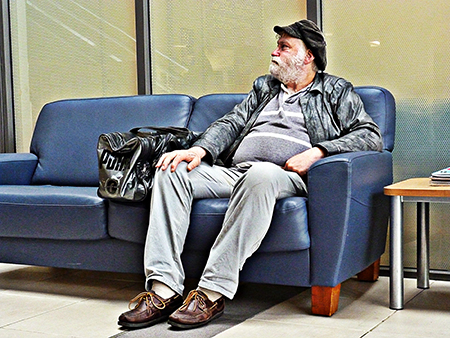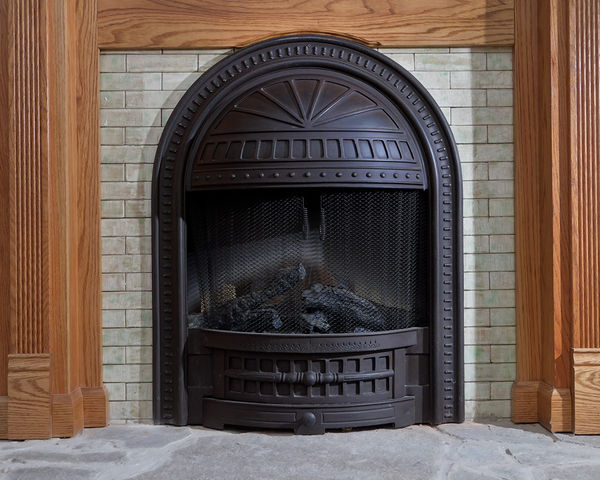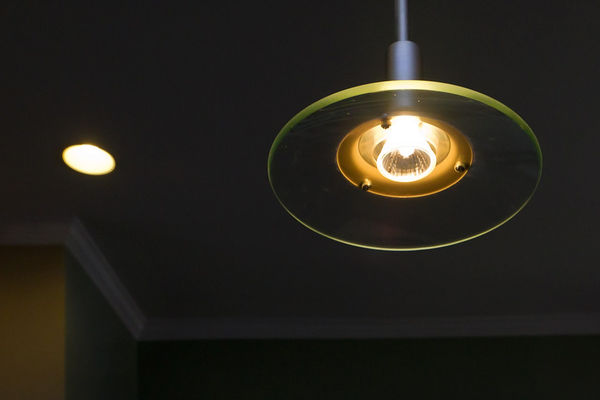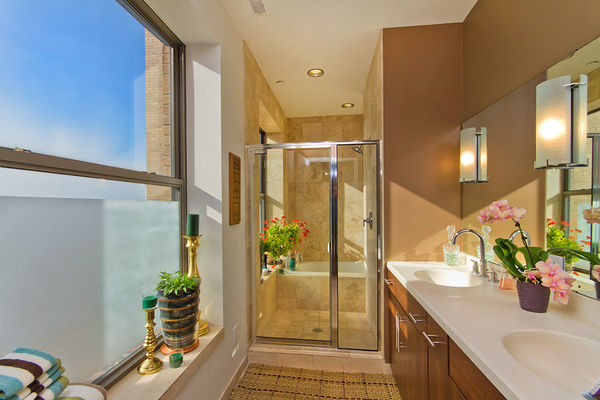Why do folks insist that Manual is Better?
Oct 13, 2013 18:34:17 #
webbo51 wrote:
I'm a little confused, my D7100 shows, amoungst other options, Auto, P, S, A, M.
d5100 as well,,......
Oct 13, 2013 18:43:57 #
Rotorhead
Loc: Midwest-Fly-Over Country
Chuck,
I enjoyed your question and particularly your writing style. Is your pen on manual?
I enjoyed your question and particularly your writing style. Is your pen on manual?
Oct 13, 2013 18:49:07 #
Chuck_893 wrote:
Thanks, John, but Nightski already hammered me: i... (show quote)
Happy medium- Aperture or shutter priority with auto exposure bracketing. Very quick, gets the shot and no worry about wasted film.
Oct 13, 2013 19:00:26 #
Chuck_893 wrote:
I am trepidatiously about to open an ancient can o... (show quote)
Well, having perused through all of this, I can honestly say I now offer this advice, er...hang on..."Thought"(you have got to be careful on here, LOL). Please could everyone accept whenever you have a camera in your hands, before doing anything, you should first of all, always switch it on, LOL...in a mode that you left it in...after you had been preferably using Manual ... P mode, at least that way, all these differences won't matter. And if something does come along/happens, then you won't be "Fiddling"around trying to sort out your exposure/WB/ISO etc.!
Oct 13, 2013 19:21:34 #
Chuck_893: You ask, "What I am trying to say is, why not use automation as a tool?," suggesting it does as well as other modes.
Answer: Only the photographer can know the result he wishes to accomplish when shooting the photograph.
Thus, while Auto Mode may produce a good exposure most of the time, the photographer may wish to adjust exposure for the best result for the conditions given the limited dynamic range of the camera's sensor.
Further, using flash lighting, the photographer may have to adjust Flash Exposure Compensation for the right amount of flash lighting to achieve the correct balance between this lighting and the ambient light.
In Auto Mode, the camera's system, for example, selects the main subject for focus, and may not select the one suitable for the intended outcome. The photographer has to intervene to select the correct focus point.
Finally, in doing landscape photography, the photographer may wish to achieve the hyper-focal distance for the particular photograph to bring everything from near to infinity into sharp focus.
The list goes on.
I have answered your question.
Answer: Only the photographer can know the result he wishes to accomplish when shooting the photograph.
Thus, while Auto Mode may produce a good exposure most of the time, the photographer may wish to adjust exposure for the best result for the conditions given the limited dynamic range of the camera's sensor.
Further, using flash lighting, the photographer may have to adjust Flash Exposure Compensation for the right amount of flash lighting to achieve the correct balance between this lighting and the ambient light.
In Auto Mode, the camera's system, for example, selects the main subject for focus, and may not select the one suitable for the intended outcome. The photographer has to intervene to select the correct focus point.
Finally, in doing landscape photography, the photographer may wish to achieve the hyper-focal distance for the particular photograph to bring everything from near to infinity into sharp focus.
The list goes on.
I have answered your question.
Oct 13, 2013 19:46:04 #
saichiez
Loc: Beautiful Central Oregon
mdorn wrote:
Yep! I had one. Good memory.
As I recall it was called an "Automatic Stick Shift". It had no clutch pedal while it did have a clutch. It did have a joint in the middle of the shift lever with a rubber boot around the joint. When the upper half of the lever was moved in the direction of an adjacent gear, the lever joint activated a switch which then activated an automatic clutch disengagement, while the bottom half of the lever engaged the next gear.
So there was a clutch mechanism in the bell housing similar to a routine clutch, but no clutch pedal inside the car. The lever did all the work, but did it in a similar fashion to a standard transmission. Very tricky indeed.
It was a "standard transmission-hand-activated-clutch stick shift", which was a mouthful if someone asked about it.
That's my recollection. I owned a number of VeeDubs, ie Beetles during the era.
Oct 13, 2013 19:46:43 #
Los-Angeles-Shooter
Loc: Los Angeles
Of course, if you want to master, or even attempt, the world of studio strobe, your "brain off and auto on" technique won't work. At all. It also won't work with many forms of beautiful and interesting lighting, both occurring and self-created. It probably won't work well if you use reflectors, diffusers, edge-lighting, hair-lighting, or almost all forms of interesting and beautiful lighting.
However, why worry about creating beautiful and skillful photos? You've achieved a high enough level of mediocrity, and if that makes you happy, why bother to progress and learn and try to become great instead of mediocre?
However, why worry about creating beautiful and skillful photos? You've achieved a high enough level of mediocrity, and if that makes you happy, why bother to progress and learn and try to become great instead of mediocre?
Oct 13, 2013 20:01:54 #
F16 at 1/125 is not f8 at 1/500 take a portrait at both settings and you will see the difference, same for a landscape or any thing where you want great depth of field.
Oct 13, 2013 20:09:45 #
When shooting a wedding, because auto exposure and auto white balance, change with every slight camera movement, images can look as if they were taken on different days-outdoor exposure doesn't change much, but it's wise to check at 15 minute intervals, in case cloud movements/other weather elements cause a difference in exposure-and that's where "sunny sixteen" rules
Oct 13, 2013 20:12:16 #
Not sure if you are still following this Chuck. 21 pages? WOW. Is that a record?
I completely agree with you. Although I choose Aperture (auto) priority 90% of the time, if you know how the camera works, as you apparently do (so do I), then it makes simple common sense to let the camera do some of the work. Or all of the work some of the time. For real creative control, under certain conditions, manual control is needed. And as long as you understand when that is needed, then keep doing what you are doing.
I completely agree with you. Although I choose Aperture (auto) priority 90% of the time, if you know how the camera works, as you apparently do (so do I), then it makes simple common sense to let the camera do some of the work. Or all of the work some of the time. For real creative control, under certain conditions, manual control is needed. And as long as you understand when that is needed, then keep doing what you are doing.
Oct 13, 2013 20:19:30 #
lbrandt79 wrote:
We are just taking pictures.
not me-I'm MAKING images:


Oct 13, 2013 20:34:23 #
I'm going to jump into the fray. I shot horse racing for nearly 30 years, starting with completely manual cameras. As each new camera presented some automated feature, you bet I used it. It allowed me to be quicker, lighter, and better. I even go to the hated P when it will get me a better image more quickly. When you have to shoot on the fly, all those auto tools sure do help! Then, when I slow down to something like a macro of a flower, I know the auto settings so well, I tend to tweak them instead of going to manual. It's one less or two less things I have to think about. But you do have to know what works and what doesn't. I agree with the one who said that auto settings are TOOLS, not crutches.
Oct 13, 2013 20:40:34 #
I shoot real estate pictures part time working with up to 5 strobes placed to light adjacent rooms, stairwells, and hallways; so, I always shoot in manual mode. When you shoot specialty items you can't just let the camera "light" the room for you. Same goes when you have a bright window in the shot. You have to crank the shutter up to the camera flash sync max which is usually 250 then flood the room with the right amount of strobe to fill in the interior shadows. I always bounce the strobes off the ceiling except when I have a dark wall deep in the background. If I can't hide a flash back there somewhere, I light that by adding a snooted strobe that shoots a kind of flashlight beam that does not hit the ceiling or overlight the foreground. Of course, I only shoot RAW!



Oct 13, 2013 21:05:40 #
Chuck_893 wrote:
I am trepidatiously about to open an ancient can o... (show quote)
The only time it is necessary to use manual is when you want to over-ride the camera and you seem to understand that.
The end result is the only thing that matters. So why do you care when the elitists push your button?
Oct 13, 2013 21:22:04 #
After wading through most of this both the reasonable and the not so I want to wade in with my humble opinion. To be considered a competent photographer a person must be able to control the various functions of their equipment in such a way as to end up with "correct exposure". In my mind correct exposure has at least two definitions, one is when things are rendered as they are ie; white things as white gray things as gray black things as black. A second definition is when things are rendered as the photographer wants them to be. (underexposing sunsets for dramatic effect comes to mind). One can do this with any of the manual or auto modes (that allow exposure compensation) the way the image maker arrives at the point where correct exposure is achieved is irrelevant as long as that person controls the process and makes good decisions. There are times when one way does work better than the others and anyone who is really in control of their camera functions will be well aware of those times. For people just starting to learn the complexities of the relationship among the 3 controls we must deal with often manual control leads them to an understanding that is hard to grasp when the camera makes some of the decisions. Once the photographer has mastered the various functions of each of the three controls and how the various auto modes deal with them then there is only personal choice involved in how correct exposure is achieved. There is no one way to make photographs and anyone who tells you there is is lying to you!!!
If you want to reply, then register here. Registration is free and your account is created instantly, so you can post right away.









